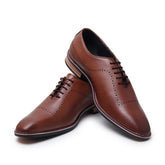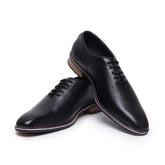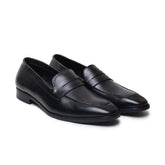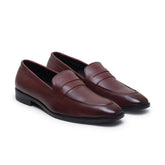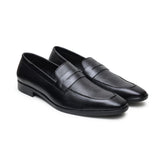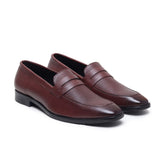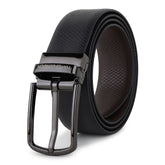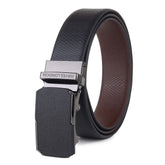The History of Leather Wallets: From Ancient Times to Modern Day

When we think of leather wallets today, we often picture fancy, slim designs that fit comfortably in a pocket. But leather wallets for men have a much richer history, dating back thousands of years. These essential items have evolved significantly, from their humble beginnings to becoming a symbol of style and status in modern times.
Wallets Are Not a New Invention
Contrary to what some might believe, wallets are not a new invention. Their origins date back to ancient civilizations, long before modern currency or credit cards were even imagined. Over the centuries, wallets have served various purposes, adapting to the needs and lifestyles of the people who used them.
What Are the Origins of a Wallet?
The word "wallet" itself has ancient roots. Derived from the Proto-Germanic word "woll," which means "roll" or "bundle," wallets were initially simple pouches used to carry essentials like food, coins, and small personal items. These early versions were more functional than fashionable, but they laid the groundwork for the wallets we use today.
Ancient Wallets: The Greeks and Romans
The first known wallets were used by the ancient Greeks and Romans. These were not the elegant leather wallets for men that we know today, but rather cloth or leather pouches tied around the waist. These pouches, known as "kibisis" in Greek, were used to carry coins, tools, and even food while traveling.
In ancient Rome, wallets served a similar purpose. Roman citizens carried small leather pouches, often made from animal hides, to store coins and other valuables. These wallets were essential for day-to-day life, especially in a society where bartering and trading were common.
What Did an Early Wallet Look Like?
Early wallets were quite different from the sleek, slim leather wallets for men that are popular today. They were usually made from leather or fabric and were designed to hold more than just money. In addition to coins, these wallets might have contained personal items, small tools, or even food rations for long journeys. The focus was on practicality and durability, as these wallets needed to withstand the demands of daily use.
Wallets in the 1300s: A Shift Towards Modern Design
By the 1300s, wallets began to take on a form that is more recognizable to us today. The introduction of paper currency in China during the Tang Dynasty influenced the design of wallets worldwide. As paper currency spread to other parts of the world, wallets evolved to accommodate these new forms of money.
In Europe, the use of wallets became more widespread, and their design became more specialized. Leather, with its durability and flexibility, became the material of choice for crafting wallets. These leather wallets for men were often small, pocket-sized, and used specifically to carry money and important documents.
Renaissance Wallets: The Rise of Personalization
During the Renaissance (14th-17th Century), wallets began to reflect the personalities and statuses of their owners. Wealthy individuals would often have wallets made from luxury materials like fine leather, sometimes adorned with intricate designs or family crests. These early luxury leather wallets for men were not just functional but also a statement of wealth and sophistication.
This era also saw the emergence of the modern wallet's shape—a flat, foldable design that could easily fit into a pocket. As society became more mobile, the need for portable storage solutions grew, leading to the widespread adoption of these new wallet designs.
The Arrival of Paper Currency
The introduction of paper currency in Europe in the 17th century was a game-changer for wallets. With the need to carry flat, delicate bills, wallets were redesigned to offer better protection and organization. The bifold wallet, with its two sections for holding paper currency and other items, became the standard.
This period also saw the introduction of additional compartments within wallets, allowing users to store not just money, but also important papers, letters, and other personal items. Leather remained the preferred material due to its strength and ability to protect the contents from wear and tear.
Wallets in the 19th Century: A Blend of Style and Function
The 19th century marked a significant shift in the design and use of wallets. As the industrial revolution progressed, more men found themselves in need of wallets that were not just practical but also stylish. Wallets became slimmer and more refined, reflecting the growing emphasis on fashion and personal style.
Leather wallets for men during this time often featured elaborate stitching and were made from high-quality leather. These wallets were designed to last, with durability and craftsmanship becoming key selling points. Many of the design elements from this era, such as the bifold structure and the use of leather, continue to influence wallet designs today.
Modern Wallets: A Symbol of Style and Status
In the modern era, wallets have become more than just a means of carrying money—they are a symbol of style, status, and personal taste. Today's best leather wallets for men are designed with both form and function in mind. Whether it's a slim leather wallet for men who prefer a minimalist look or a luxury leather wallet for men who want to make a statement, there is a wide range of options available to suit every preference.
The materials used have also evolved, with an emphasis on high-quality leather that not only looks good but also stands the test of time. Genuine leather wallets for men are prized for their durability, patina, and the unique character they develop with age. Brands like Hayes London continue to uphold the tradition of crafting premium men's leather accessories, offering handcrafted men's leather products that blend timeless design with modern functionality.
The Future of Wallets
As technology continues to evolve, the future of wallets may look very different from today. Digital wallets and mobile payment systems are already changing the way we think about carrying money. However, the appeal of a well-crafted leather wallet is unlikely to fade. There will always be a place for high-quality men's leather items that offer both practicality and a touch of luxury.
Conclusion: The Enduring Appeal of Leather Wallets
From their origins as simple pouches in ancient Greece and Rome to the luxurious, handcrafted men's leather products available today, wallets have come a long way. They have evolved to meet the changing needs of society, adapting to new forms of currency and the demands of modern life. Yet, despite these changes, the core appeal of a leather wallet remains the same—a reliable, stylish companion that carries our most essential items.
Whether you're looking for the best leather wallets for men or a slim bifold leather wallet that fits seamlessly into your lifestyle, Hayes London offers a range of high-quality men's leather items that combine tradition with modern design. Explore our collection of premium men's leather accessories today and find the perfect wallet to suit your needs.
